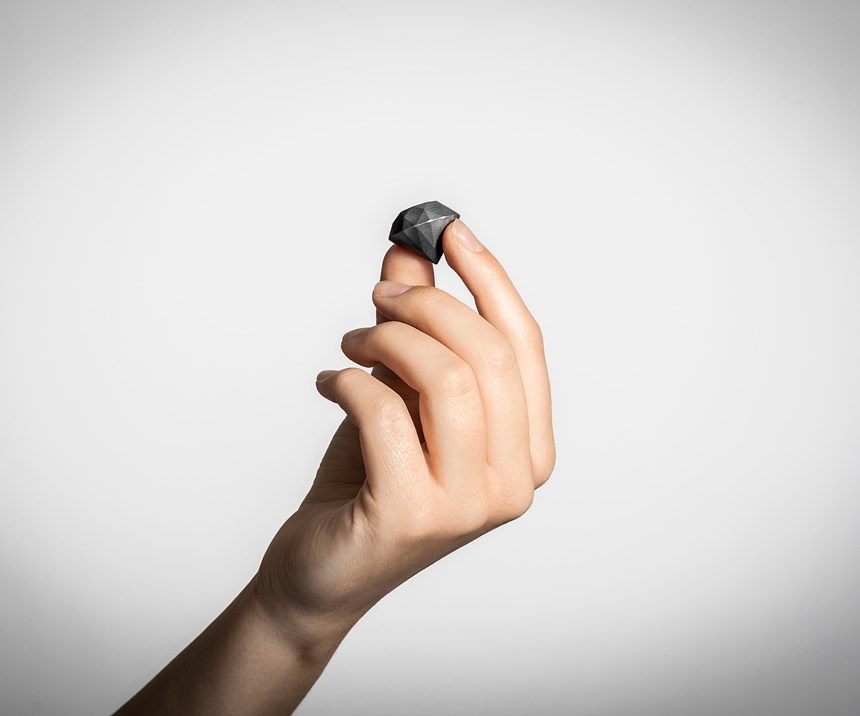Sandvik Creates First 3D-Printed Diamond Composite
Using a mixture containing diamond powder and polymer, the 3D-printed diamond composite was created using stereolithography.
Sandvik Additive Manufacturing has created the first ever 3D-printed diamond composite showcasing that this super-hard material can now be 3D-printed in highly complex shapes. Diamond is 58 times harder than anything else in nature.
Due to Sandvik's use of additive manufacturing, diamond components can now be created application ready, in very complex shapes, without the need for further machining. The company believes this will open up the possibility of using it in applications that were previously considered impossible.
"Historically, 3D printing in diamond was something that none of us imagined was achievable," says Anders Ohlsson, delivery manager at Sandvik Additive Manufacturing. "Even now we are just starting to grasp the possibilities and applications that this breakthrough could have.”
"On seeing its potential, we began to wonder what else would be possible from 3D printing complex shapes in a material that is three times stiffer than steel, with heat conductivity higher than copper, the thermal expansion close to Invar – and with a density close to aluminum. These benefits make us believe that you will see this diamond composite in new advanced industrial applications ranging from wear parts to space programs, in just a few years from now."
A mixture containing diamond powder and polymer is used in the process and the 3D-printed diamond composite was created using stereolithography, where complex parts are produced, layer by layer, using ultraviolet light. For the next step after the printing, Sandvik developed, a tailor-made, proprietary post processing method that is able to produce the exact properties of the diamond composite.
Another key advantage of additive manufacturing is that it allows engineers to minimize material waste. The diamond powder in Sandvik's process can be extracted from the polymer in the mixture after the printing, and then be recycled and reused in another print-job.
The diamond composite has been tested and found reportedly to have “extremely high hardness, exceptional heat conductivity, while also possessing low density, very good thermal expansion and fantastic corrosion resistance,” the company stated.
"We now have the ability to create strong diamond composites in very complex shapes through additive manufacturing, which fundamentally will change the way industries will be able to use this material. As of now, the only limit to how this super-hard material can be shaped and used is down to the designer's imagination," says Mikael Schuisky, head of R&D and operations at Sandvik Additive Manufacturing.
Related Content
-
Additive Fusion Technology Optimizes Composite Structures for Demanding Applications
9T Labs continues to enhance the efficiency of its technology, which produces composite parts with intentionally oriented fibers.
-
420 Stainless Steel Now Qualified With TrueShape 3D Printing Technology
NPE2024: Mantle's additive manufacturing technology is designed for precision tooling.
-
NPE 2024: Additive Manufacturing Assisting, Advancing Plastics Processing
Exhibitors and presenters at the plastics show emphasized 3D printing as a complement and aid to more traditional production processes.


















